SotoTennis Academy hosted the Progress Tour in October 2019, it was an amazing success seeing players from 16 nationalities competing.
Watch our video and read more about the event below.
SotoTennis Academy Director Dan Kiernan has been invited to be a guest speaker at the upcoming Between The White Lines Summit.
Dan is one of 44 world-class tennis-preneurs from around the world who will be sharing their experiences, cutting-edge strategies, and knowledge during the 3 day online summit.


You’ll have the opportunity to listen to guest speakers like Sanchez-Casal Academy founder Emilio Sanchez, pro tennis coach and author of Tennis Saved by Life, Sam Jollah.
You’ll also be able to get marketing tips from experts like tennis social media strategist Christina Mihaela Carare and million-dollar marketing strategist Kim Barrett.
All around the world ‘tennis’ faces huge pressures on recruiting the new generation of tennis players and retaining the others. Join Between The White Lines to get the proven methodologies, new technologies and the contact network to help you build your programme.
Watch creator and host of Between the White Lines Summit, Mark Jeffrey, share his mission to build tennis post code by post code from playground to podium.


The summit kicks off on Thursday 24th September and runs until Saturday 26th September 2020.
Don’t miss STA Director Dan speaking on Saturday 26th at 18.40 (UTC+1)!
Dan will also be hosting a zoom chat and Q&A at the end of each day with some of the guest speakers.
Sign up to the virtual Summit for FREE here!
As a thank you for being part of the SotoTennis Community we are also offering two special discounts if you book your summit tickets before this Saturday 19th September.
Click here for 31% off a VIP Ticket
The VIP ticket gives you real-time and unlimited replay access to all of the powerful, industry revolutionizing presentations and methodologies guaranteed to transform your business and grow tennis. Replay access valid through the end of 2020.
Click here for 15% off a Business Collaboration Ticket
This will give you lifetime access to all of the presentations and methodologies as well as exclusive access to each of the world-renowned speakers in the breakout rooms. This will give you the chance to ask your questions, share your ideas, and connect with the innovators, the thought leaders of our sport who you would otherwise not have access.
We look forward to e-meeting you at the Summit next week!
Last year STA’s International Progress Tour Event saw over 50 players battle it out over four, hard-fought competition days for the Winner’s cheque of €1000. This October 2020, in a Covid-safe environment, the Tour returns home and looks set to be even bigger and better than last year with:
Outdoor Clay (playback matches may take place on an alternative surface)
Mixed Event, recommended UTR of 6.5 upwards
Entries are based on a first-come, first-served basis
Entry deadline is 2pm on Friday 23rd October 2020 OR when entries are full.
Winner €1000
Finalist €400
Semi-Finalists €200
Quarter-Finalists €100
Female Bonus €200
Want to be part of Team Soto for the week? Click here for more information about our exclusive Training Week offer for Progress Tour Competitors.
Please contact us via info@sototennis.com if you would like to train with the Academy before, during or after the event.
On court training, strength and conditioning sessions and match feedback available.
All plans are subject to change.
With every tennis match-up we almost always fall in to one of three categories. We are either competing as the ‘underdog’, the ‘favourite’ or against a close ‘rival’.
But should this change your approach to the match? Should you prepare differently? Change your tactics? Are there any common ‘traps’ you fall into during difficult moments in these matches?
STA Senior Coach James Buswell will be answering these questions as he looks at common behaviours and mistakes we make based on our pre-match expectations. He’ll also give you some tips that will help you in match situations, whether you’re going in as the underdog, the favourite, or playing against a close rival.
The Underdog, the Favourite or the Rival: Which do you Prefer?
Every tennis match is demanding and challenging at the best of times, and so to gain an advantage it’s worth understanding that playing as the ‘underdog’, ‘favourite’ or ‘rival’ tends to trigger different thoughts, feelings and related behaviours. These can be triggered before, during or/and after each match.
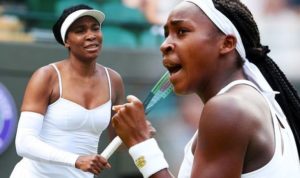

This is mainly related to the expectations you or other people have, the perceived pressure on winning, and the learnt habits we have adopted over time, which often are unhelpful.
It’s important players understand the subtle differences that each type of ‘match-up’ brings. You can start to do this by developing your self-awareness, so noticing any patterns of thinking and behaviour each match-up triggers and recognising the common ‘traps’ you may fall into.
You might want to make some notes for each category. Ask yourself which category do you prefer playing, and why? What feelings or behaviours do they trigger?
To be an effective match player it’s crucial you are equipped with the necessary skills & solutions for any given match, and for each specific situation that may arise during the heat of battle!
Recognising the subtle differences and having more awareness of how they affect you, will give you a much better chance of recognising them on court and putting the solutions in place.
PLAYING AS THE ‘UNDERDOG’
Everyone loves the ‘underdog’…right? The ‘underdog’ isn’t expected to win. This can remove any perceived pressure, but have you got what it takes to turn the tables, get over the winning line and cause an upset?
Do you fall into some of these common ‘traps’ when you’re the ‘underdog’?
• Listening to unhelpful advice from the wrong people.
• Believing that you have to play ‘lights out’ to live with your opponent.
• Choke when you are in reaching distance of the winning line.
• Lose your ‘fighting spirit’ early in the match if you are down.
• Doubt your chances of winning before the match even starts.
• Have no game plan.
If you answered yes to any of these points then you’re not on your own! Luckily, there are many solutions you can learn to help with this:-


! Mixing up the play instead of trying to match tempo.
! Having clarity of your game plan (know how you’re going to win points).
! How to BE – walk tall and have a presence.
! Stay ‘present’ on big points.
! Be smart in the early phase of the point (shots 0-4).
PLAYING AS THE ‘FAVOURITE’
Do you remember what you were thinking and feeling the last time you played as the ‘favourite’?
Being the ‘favourite’ to win a tennis match can sometimes feel really uncomfortable because of the expectation on your shoulders. When you win, it can feel more like relief rather than enjoyment and satisfaction.
Someone has to be the #1…isn’t that the ultimate dream? Have you got champion qualities and what it takes to win as the ‘favourite’?
Do you fall into some of these common ‘traps’ when you’re the ‘favourite’?
• Being complacent:-
o Underestimating your opponent’s level (ranking can be misleading).
o Not scouting your opponent properly.
o Sloppy pre-match preparation.
• Rushing to win quickly and ‘over-playing’.
• Fear of failure causing extreme anxiety and tension.
• Not staying ‘present’ and over-thinking.
It’s not unusual for the ‘favourite’ to lose to the ‘underdog’ because they’ve fallen into some of these ‘traps’. We’ve all been there!
Here are a few really helpful solutions that you may want to try out:-
! Respect every player the same – the ‘underdog’ has something to prove!
! Do your homework so you know what to anticipate.
! Have a clear game plan.
! Breathing is a great strategy to manage those inevitable nerves.
! Don’t panic and stay calm if you get off to a poor start.
! BE the favourite and play proactively – Be confident, you’re expected to win for good reason.
PLAYING AGAINST A CLOSE ‘RIVAL’
There have been so many famous big ‘rival’ match-ups over the years and there are also many today. For example, Sampras vs. Agassi, Seles vs. Graf, Halep vs. Williams, and Federer vs. Nadal, to name just a few.
These matches are often exciting to watch, real nail biters, the ‘popcorn’ matches you never forget!
We all have our close rivals and when we’re playing against them, it can often feel incredibly intense. The outcome is more uncertain, the match is 50-50 and can go either way, and so it’s about learning how to tip the balance of the match in your favour.
Do you fall into some of these common ‘traps’ when you’re playing against a close ‘rival’?
• Losing perspective and making the winning too important.
• Playing for ‘bragging rights’.
• Not able to stay ‘process-focused’.
• Remembering the last head-to-head that didn’t go your way.
• Not managing your ‘self’ effectively during those inevitable clutch moments.
• Not having a clear game plan.
It’s very easy to fall into these ‘traps’ when the outcome means so much to you. Here are some really useful tips and solutions for the next time you play one of your close ‘rivals’:-
! Be clear on your strengths and your winning patterns of play
! Know how you’re going to ‘act & be’ during those anticipated clutch moments. Spend time visualising this before the match. Read more on this in our blog: 5 Visualisation Tips to Improve Your Tennis.
! Stay ‘present’ to help you execute your game plan.
! Expect a battle! Be ready and remember, you may lose lots of points (52% is the target).
! Be proactive and take the initiative, especially on big points.
You will now have a greater understanding of the ‘underdog’, ‘favourite’ and ‘rival’ categories. More importantly, you can now recognise the subtle differences, have much better awareness of the common ‘traps’ and feel more equipped with lots of helpful solutions. This can help with those moments of panic during tough situations in a match, and give you more confidence that you can come out of them.
Taking some time to really sit down and Pre-match planning and post-match reflections. Get our guide to… here to help you…
Best of luck on your tennis journey!
James Buswell
For more tips about the underdog, favourite and rival, check out Your Guide to Winning Matches. If you’re serious about improving your ability to win matches at all levels, then this resource is perfect for you.
I’m sure most coaches out there have witnessed your players at some point in their tennis journey make crazy decisions when finding themselves close to the winning line.
After many years of watching players compete at all levels I’ve realised that players generally do one of two things from a tactical perspective, when facing difficult thoughts and feelings when trying to see out a match.
I use the analogy, ‘BRAKING AND ACCELERATING’ to explain this tactical perspective to players.
The BREAKER is a player who is desperate to get over the winning line. They often become extremely passive, praying that their opponent will give them a cheap error.
Unfortunately the player stops committing to playing their smart aggressive game style, which has got them into the winning position in the first place. This negative mindset promotes tactical awareness that isn’t productive, often resulting in the player failing to ‘get the job done’.
The ACCELERATOR is the player who when confronted with the thought of winning, panics and shies away from their smart aggressive game style. They suddenly go for glory at the wrong times and make poor decisions hoping to hit winners from virtually every ball they hit all over the court.
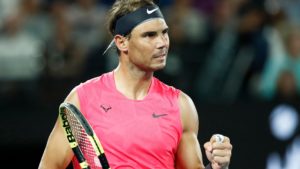

Both scenarios take us away from where tennis is best played which is in the present moment!
Points are therefore often started without helpful intentions and we play points not using committed helpful actions (Here’s the blog post to read more on this). This gives us less chance of performing well under pressure and therefore less chance of winning.
Preparing the players you coach for these types of situations is essential. Working both on their acceptance and tolerance levels to these difficult match situations will allow them to feel more comfortable when these situations arise in a match.
I believe that practicing 2/3 patterns for 20 minutes every day built around the players strengths helps the player build clarity in what they want to execute from a tactical perspective when under pressure.

If done well enough, it will cement tactics that the player can commit to as their helpful intention at the start of all pressure points. Making the player feel comfortable when life gets uncomfortable!
At the end of every session I simply basket feed the player ‘their patterns’. This gives the player a feeling that their patterns belong to them and reinforces that these are their go to pressure patterns.
As a coach, this is where you can really build a player’s confidence!
I have found this dramatically helps players stay in the present moment which is ultimately where the player needs to be when the pressure is on!
Nigel Beavers
STA Performance Coach
Dr Anthony Ross is one of the worlds leading sports psychologists. His work has really helped me gain a better insight into the mental aspects associated with this common problem faced by many players.
His website is highly recommended for any aspiring player or tennis coach. You can also hear STA Director Dan Kiernan talk to Dr Ross in Episode 09 of our podcast which is a great listen.
It is my belief that committed helpful actions is one of, if not the most important aspect of being a mentally tough tennis player.
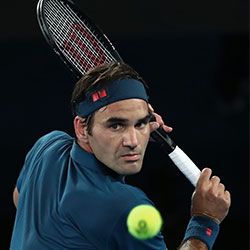

Some will say they are committing to their game plan, some to their patterns, some to high energy and some even just to being in the moment and enjoying the battle. Some of the best interviews are after a close match, these are the real insights into committed helpful actions!
How often have we heard the phrase “I just hung around and committed to my plan and fortunately for me it paid off in the big moments.”? These guys are not superhuman beings mentally, they are simply committing to small helpful actions one point at a time!
It stands to logic that the player who commits most to helpful actions gives themselves the best chance of winning right? Duhh! But how many of us are purposely doing this, point by point, in matches?
My guess is not many of us! I certainly didn’t when I was playing and if I could change one thing about my distinctly average playing career, it would be to commit to a helpful action every single point!
Okay you are sold right? Commit to something helpful, have a bigger chance of winning.
Simple.
But not just that, let’s take it back a level to training.
Yes, winning is great and ultimately tennis is a win or lose sport so, whether we like it or not, it is important! But how do we win more? We need to give ourselves the best opportunity in matches yes but also, and probably more importantly, we need to improve!
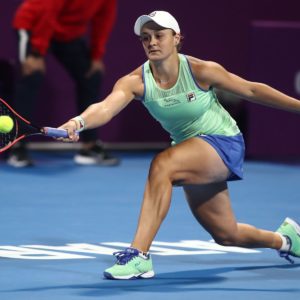

So, what if you committed to a helpful action based around improving before every single rally? How many aimless rallies do you hit per session when warming up? 50? 100? Maybe more! And then think about how many points you play in practice sessions where you could commit to helping yourself improve. Another 50? 100?
For numbers sake let’s say it’s 100 combined rallies and points per session that are aimless. That is 200 per day for players with a programme of 2 sessions per day. 1000 per week. 50,000 per year.
50,000 opportunities to commit to improving per year that we are potentially missing!
Okay so what can you do to tap into this magical world of committed helpful actions?
Well there are multiple ways of doing this and applying it. Here at STA we prioritise 4 ways of having committed helpful actions and 1 strong way of applying them…
Commit to saying 1 or 2 before every shot. 1 is owning the court, 2 is respecting the ball.
This one is used primarily in training to help with improvement. It can be used to develop tactical understanding of incoming ball or court position.
Commit to an external target for the next point. Eg: Watch the ball. Hit an area/zone/item.
This one is the most used among the pros in matches and relates primarily to tactical patterns.
Based on score lines/passengers commit to an appropriate basic plan. Lockdown, smart aggressive or super aggressive.
This one can be used in training and in matches. Based on your identity and preferences you chose one of these game styles before every point. You can adapt these so that they are personal to you.
Commit to being a great performer for the next point. Eg: High Energy
This one is used often at the beginning of practice and matches where performer skills can have a big impact on the outcome and value of the following session or match.
On top of your one helpful action, commit to a tactical, opponent based or shot specific focus. E.g. Hunt for the forehand, make your opponent move backwards or drive up on the serve.
This is a bonus one I have thrown in. Great to be used for technical focus during practice!
Applying your committed action with one or two key words that summarise your committed action. Often used for game style or performer actions. Eg: ‘Smart Aggressive’ or ‘Energy’.
This is the strategy we use at the academy to apply them. Make your key words personal to you!
So that’s it right? I am mentally tougher now than before reading this blog and now I am going to be able to commit to this process every single point and rally, improve quicker and win more matches?
Sadly, not quite. Like any skill this requires patience, practice, determination and many hours of devotion to it. And guess when is going to be the hardest to commit to a helpful action?
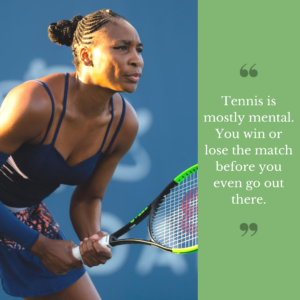

Committed helpful actions, in my opinion, are the basis of being mentally tough. But like everything, there are many, many, many layers to being able to commit to these actions. For a lot of people, a much deeper understanding is required to be able to do this when it really matters.
Here at STA, along with Dr. Anthony Ross from Mentally Tough Tennis, we pride ourselves on being able to provide strategies, interventions and routines to help you make the most of these committed actions.
What small committed helpful action could you take right now to improve your mental toughness?
It could be to visit our Instagram page and get in touch about the many ways we can help you develop into a mentally tough tennis player!
Thanks for reading!
Ryan Bedwell
SotoTennis Academy
For those of you who do not know me, I am a tennis coach at STA. At the academy I am heavily involved with developing the mental toughness of our tennis players and we are exceptionally fortunate to have a strong partnership with Dr. Anthony Ross from Mentally Tough Tennis.
Dr. Anthony is a world-renowned sports psychologist and producer of mental toughness programmes, who has influenced the work we do endlessly here at STA as well as some of the top pros in the world!
More info on Dr. Anthony Ross and his work can be found here
Want to learn more about committed actions and mental toughness? We’ve teamed up with Mentally Tough Tennis to provide a series of Mindfulness and Creative Visualisation activities designed for tennis players. Register for the Mindfulness Mastery course here.
Lockdown has been a testing time for us all, but it’s also an opportunity to develop many areas of a player’s game that are often neglected.
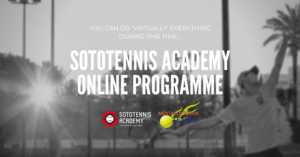

SotoTennis Academy and Mentally Tough Tennis have come together to provide a 21 day online programme to help keep players motivated to keep developing their mind, body and game during these challenging times.
The online programme will provide up to 25 hours of amazing content each week including mental, physical, tactical and technical sessions.
The course materials are shared as video content and printable worksheets with fitness tutorials, drills, games, quizzes and projects to help develop skills.
We believe you can ‘virtually’ do everything. 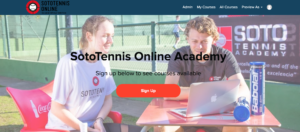

We’ve written 3 programmes for different level players ranging from under 11 club/school players to Junior competition level players/adult club and pro players.


Luc our Strength and Conditioning coach has produced this blog which provides a better understanding of visualisation, a tool players can use to continue training their mental and physical skills whilst off court. Some practical tips are provided about their application.
“Imagination is more important than knowledge” Albert Einstein

Let’s start with a short story!
Sasha, a 6 year old boy, wakes up on Christmas day, filled with excitement about the presents waiting for him under the tree. He jumps out of bed, gets dressed and runs down the stairs to find his parents waiting for him in the living room. They hand him three presents. He decides to open the biggest one first… it’s a bike! To his parents’ surprise, Sasha hops on the bike and rides around the living room, despite never having ridden a bike before. His parents are shocked at what they’re seeing. Upon their curious looks, Sasha says, “I have been dreaming so much and I have been imagining so much that… it’s easy!”
This is the power of visualisation!
Visualisation, you say?
We can talk about motor imagery, visualisation, imagined practice… all these terms are similar and refer to one of the most remarkable human mental capacities: the process by which one can imagine and simulate the sensations of an action without engaging in its physical execution.
Have you ever imagined yourself flying? Or having incredible superpowers? This is the best proof that we all visualise frequently throughout each day, although most of the time subconsciously.
We must not confuse motor imagery with mindfulness. Mindfulness is a different kind of mental training, referring to an open-minded and non-judgmental awareness of oneself and one’s environment. In tennis terms, this can mean accepting the frustration we feel when we make an error or double fault at a key point in the game. This is another very interesting topic, but we’ll save it for another time.
The possibility to transform our lives with visualisation is a powerful ability that we all have as human beings. We all have the capacity to create our reality by thinking, doing and visualising. Our thoughts and emotions have an undeniable impact on our reality, regardless of whether or not we are aware of this process.
You don’t need to be a Tibetan monk or have extraordinary skills to use and master this innate ability. You just need to take time to visualise and create your new reality.
You have everything you need, it’s all right there in your head.
What’s happening in our brain, exactly?
The power of imagined practice is huge due to its capacity to reproduce the neurological routes that would occur if we performed the situation in reality.
Each time we move, our central nervous system (CNS) creates an electrical message which travels along our spine to our muscles, making them contract. Our brain is a wonderful engine and is incredibly intelligent, with the ability to differentiate between real and imagined movement.
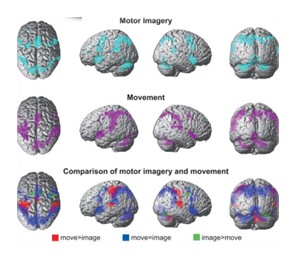

However, the preparation and control networks in the brain are always turned on, thus both imagined and executed movement will result in a similar brain activity.
This article is centred around tennis, but take a second to think about all the areas in our life that motor imagery can impact: skill development, performance enhancement, CNS injury recovery… The possibilities are huge.
Figure 1. The comparison of movement-related and imagery-related activities.
Bianca Andreescu and the power of visualisation
Bianca Andreescu is a perfect example of the power and benefit of visualisation. Andreescu is a 19-year-old Canadian tennis player who won the 2019 US Open Women’s Singles, beating Serena Williams in the final. Giving an incredible performance throughout the tournament, she displayed a level of calmness and courage that is very impressive for her age.
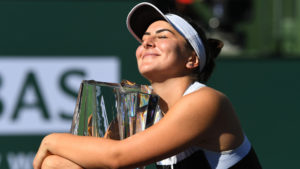

“I put myself in situations that I think can happen in a match, basically.”
“I think your biggest weapon is to be as prepared as you can. I really think that working your mind is important because at this level everyone knows how to play tennis.” Bianca Andreescu
How can I start integrating visualisation into my day?
As mentioned above, visualisation is a powerful tool and to master it provides the opportunity to develop many areas: strength training, improving technical or tactical skills, increasing motor performance in specific tasks, reducing anxiety… The possibilities are huge! But it requires a certain amount of rigor.
Using our imagination is a good start, but it’s not enough to train our specific neural connections.
Here are our 5 tips to help you integrate this work into your daily routine:-
1. Don’t be scared. We all visualise everyday.
I’m sure you’ve spent minutes, hours, maybe even a whole night anxiously imagining your upcoming match and the many scenarios possible. This is visualisation and we all do this, whether it’s for a tennis match, an exam, an interview.
Now, the key here is to focus on directing this visualisation towards meeting your goals and objectives, rather than involuntarily allowing the anxious thoughts to negatively affect your state of mind and thus your performance. “The more you practise, the more effective this will be”.
The new reality you create in your mind must be as close as possible to a real-life scenario. “Respect the duration and the speed!”
2. Start with easy, non-specific visualisation drills.
One of the most important aspects of this process is experiencing emotions, as this will provide more credibility to your brain. You have to be able to see, hear or feel to facilitate the learning process.
Situations such as imagining yourself cooking or doing another activity which awakens your senses have to be your first step. Looking back on a situation you’ve already experienced is the easiest way to recreate as many details as possible and increase the effectiveness of this work.
Once you’re able to successfully create complex emotions, you can start more specific work.
3. Make sure you’re in a good mood!
Due to the importance of our emotions, make sure you’re doing this work whilst in a positive mood, feeling confident and content.
This will facilitate the connection between the situation you’re visualising/working on and other memories of confidence and achievement.
4. You don’t need to be lying down!
Whilst visualising, try to replicate the energetic state of the situation you want to improve. In other words, don’t relax on the sofa if you’re visualising yourself running or lifting heavy weights!
To influence your new reality, try implementing follow-through movement. If you’re picturing yourself playing shots, use a tennis racket to replicate the movements. If you’re imagining squatting in the gym, use a stick in the same way you’d use a barbell.
This requires some technical knowledge about your activity and body, but give it a try and figure out the most effective method that works for you.
5. How long should I practise for?
Now that your brain is working as hard as it would be on-court, remember to allow your brain to recover between repetitions, and make sure not to train for too long. 10 to 15 minutes of work per day is already a good start.
If you get tired, you will lose your focus and this will hinder the effectiveness of visualisation.
You should now have a better understanding of why and how you can use visualisation to improve your tennis.
Remember Einstein’s words, “If you want different results, do not do the same things”. Expanding your toolbox of resources will make you a better player and you’re guaranteed to notice the difference.
You might not want to go up against Serena Williams, but no matter the objective, visualisation is the best gift you can give yourself to create the life you want the way you want it.
Good luck!
Luc Bardeau
Strength & Conditioning Coach, SotoTennis Academy
Do you want to develop your Visualisation skills? Register for our Mindfulness Mastery course for Visualisation and Mindfulness exercises and activities designed for tennis players and coaches.
References
Aherne, C., Moran, A.P. & Lonsdale, C., 2011. Mindfulness and flow in sport: an initial investigation. The Sport Psychologist, 25(1), pp.177- 189.
Guillot, A., 2019. L’imagerie mentale pour (re)muscler le cerveau et le corps [Online]. Available from: https://youtu.be/32dape5tzxA [Accessed 9 April 2020].
Guillot, A., Desliens, S., Rouyer, C. & Rogowski, I., 2013. Motor Imagery and Tennis Serve Performance: the external focus efficacy. J Sports Sci Med, 12(2), pp.332-338.
Hanakawa, T., Dimyan, M.A. & Hallett, M. (2008). Motor planning, imagery, and execution in the distributed motor network: a time-course study with functional MRI. Cerebral Cortex, 18(12), pp. 2775‑88.
Jiménez, L.J., 2017. Creativity on court I: felt visualization. ITF Coaching and Sport Science Review, 73(25), pp.27-29.
Our full-time players train all year round on the clay at STA, but not everyone has access to clay courts where they are. One of the most frequent questions our coaches receive is whether it really is necessary to slide on clay. Coach James Buswell is here to help…


Often, players who can’t slide or don’t slide well tend to slip in certain situations and lose their balance. As a result, they will struggle when moving out to the ball, playing the shot with balance and recovering efficiently. When running or chasing a ball down at speed, sliding allows the player to decelerate or brake when playing a shot and then recover.
Players need to learn to slide in various situations: before playing the shot, during the shot, and after playing the shot. Below, we’ve outlined a few examples of these three scenarios.
Before playing the shot
During the shot
After playing the shot
These clips show how beneficial it can be to slide on a clay court.
Some benefits of sliding on clay:
Any more questions? Email us at info@sototennis.com to request our next blog topic!
To keep learning you can also check out our online courses!
Nigel Beavers discusses the Second Serve plus 1 “Unfashionable Practice”
As a Senior coach at SotoTennis Academy I often get asked by players, coaches and parents “what should tennis players practice more often?”.
Through my experience most players would choose what I call “exciting practice”, those drills and practices that incorporate dominating their opponent, timing the ball well and executing heavy groundstrokes. Players love drills that fall within their tactical, technical, mental and physical comfort zones. Although these types of practices are important, I believe that exposure to challenging tactical situations needs greater repetition to build a more robust player.
One of my suggestions to develop better practice is a term I call “Unfashionable Practice”, but what is it?
By this I mean practicing difficult defensive tactical situations where time pressure is at a high, resulting in the player having to manufacture their technique to deal with the situation they find themselves in.
The prime example of this would be a defensive ball 3 situation after a second serve. This situation often takes away what a lot of players crave which is rhythm. For me this is the most under practiced area of the game, yet statistically the percentage of points won behind second serve is often the overriding stat that either wins or loses you a match.
Recent studies by Craig O’Shannessy have shown that out of all points that end in the 0-4 rally phase, 23% of all these points are serve plus 1 errors. From charting my own players matches at ITF Tournaments I believe a larger percentage of serve plus one errors happen from second serve points. Practicing these difficult tactical situations will allow you to develop your skill base under pressure.
Drills I would recommend that expose players to these situations are:
All the above are drills used with the intention to put the server into uncomfortable situations where he/she is often under immediate pressure.
I hope this is helpful and an insight into some tennis techniques, get in contact with SotoTennis Academy to find out more!Email info@sototennis.com
You can also check out the online programmes we offer here.
SotoTennis Academy hosted the Progress Tour in October 2019, it was an amazing success seeing players from 16 nationalities competing.
Watch our video and read more about the event below.
SotoTennis Academy hosted its first Progress Tour, what a huge success it’s been with over 60 players competing. Ollie Cores was a great referee, coordinating the tournament and making sure players had at least four competitive matches throughout the event.
Land Rover Future and Babolat sponsored the Tournament. Our ball crew of young STA players looked great and did a brilliant job.
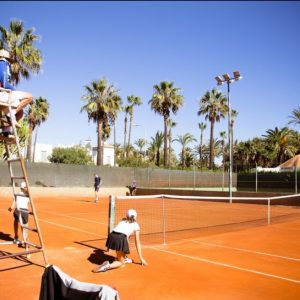

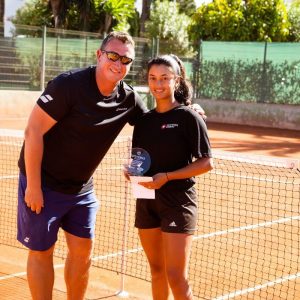

We had players from 16 nationalities competing including UK, Ireland, Spain, Greece, Sweden, Israel, Lithuania, Germany, Gibraltar, Portugal, Hungary, Russia, France, Canada, Australia and the USA.
The Women’s Bonus went to STA player Anjie Suresh from Canada who beat Katie Graydon in the playoff match.
Players making it through to the semi-finals where:
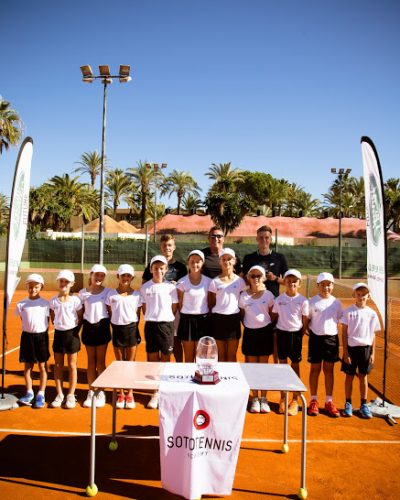

The semi-finals which were played on Thursday morning saw James MacKinlay beat Matthew Gedney 6-1, 6-1. Joe White beat Lucas Franco Vacas 6-4, 0-6, 6-1.
The final on Thursday afternoon saw a full crowd of supporters. A ball crew of young STA players had been trained by coach Mark Smout. The ball crew where very efficient and helped the final run very smoothly. Joe played a very solid match making very few unforced errors, whilst also making it difficult for James to approach the net and be aggressive. There was lots of great tennis to see with Joe winning 6-3 6-2 .
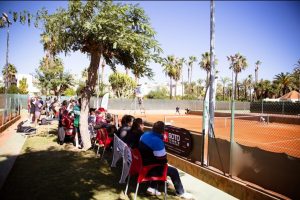

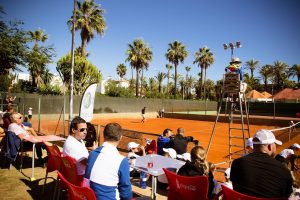

The presentation of the trophies was conducted by Dan Kiernan, STA director. He thanked, Land Rover Future, Babolat, the El Octogono owner and staff, STA employees, the supporters, ball crew and the players for a fabulous tournament.
Special thanks to Kris Gray from Tenerife for being the umpire in the final.


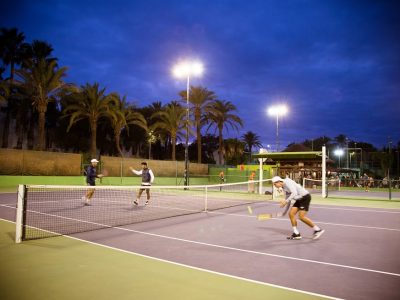

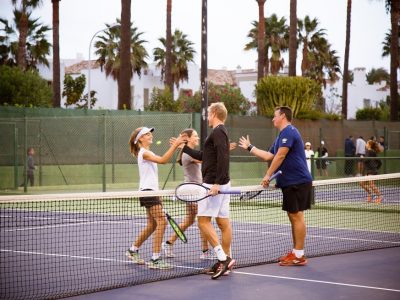

The doubles tie break tens were held on the Tuesday night and saw 28 pairs competing. The fast-paced nature of the event made each result the more unpredictable.
There were seven pools with four teams in each. The winning team from each pool then went into the quarter finals along with the best runner up team.
The semi-final matches saw 6 full time STA players, one STA director and one previous STA player all compete. Arkadianou/Flaherty beat Kiernan/Hoyt 10-8 in a thrilling encounter. Scottish duo Collins/MacKinlay beat Gleeson/White in another nail-biting battle.
The Final between Arkadianou/Flaherty and Collins/MacKinlay was a very close match with Arkadianou and Flaherty moving 8-4 ahead. Collins and MacKinlay found the composure and brilliance to come back and win the Championship trophies.
There was a great atmosphere with all ages watching the tennis on show a lovely BBQ was available for everyone to enjoy.
So many people have commented on what a successful tournament it’s been, as an Academy we have loved it! We hope to see you all next year. #TeamSoto
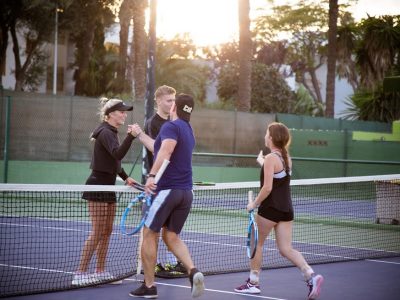

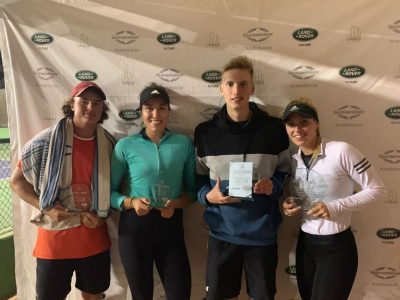

During the progress tour Evan shared some of his learning with players
“Happiness breads success” don’t be too self-critical, enjoy he process. It’s important to know why you are competing, this will help you when overcoming setbacks:
The Elite Sports Programme Student
Matthew Gedney is studying for A ‘levels in Economics, Business and Maths and attends Sotogrande International School (SIS) each afternoon. The small team of well qualified experienced teachers encourage Matthew to embrace his opportunities to be the best he can. Matthew says “the small class sizes allow for more individualised support from the teachers”.
SotoTennis Academy has a strong team ethos with individualised goal setting and development for each player. On a daily basis Matthew completes a strength and conditioning session as well as on court tennis squads. Matthew has a lead coach who supports him to meet achievable goals, plan tournaments and use Mentally Tough Tennis techniques to further his development.
Matthew stays at the SIS Boarding house which provides exceptional accommodation and academic support in a warm vibrant community. The Boarding house is an incredibly rewarding and enriching environment in which sports students have the option to live, grow and study. Matthew says the facilities allow him to “recover well and refuel” after tennis.
The Progress Tour
One of Matthew’s recent tennis achievements is making his way into the semi-final of the SotoTennis Academy Progress Tour. The event saw over 60 players from many different countries compete for winners prize money of 1,000 Euros.
Matthew won a match in the qualifying rounds of the tournament. He then progressed into the main draw winning a further three matches to make the semi-final. This was a brilliant achievement from Matthew who was the youngest player to make the semi-finals.
The Future
Matthew’s future goals are to continue tennis and studies at University and become a professional tennis player on the ATP tour.
Last year we had three students graduate the Elite Sports Programme, all of which are now studying at Universities in America. Support from SIS was given on the SATs entry examinations and the Academy supported players in finding the right universities for their needs.
If you have any questions on the Elite Sports Programme, please contact louise.robertson@sototennis.com
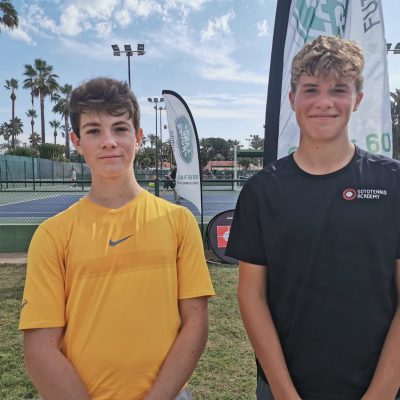

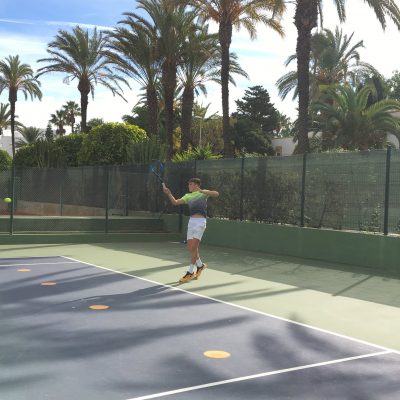

We are very proud of SotoTennis Academy player Evan Hoyt for reaching the quarter-finals of the Mixed Doubles at Wimbledon with partner Eden Silva. Evan is the first Welsh person to reach the quarters since Gerald Battrick in the Men’s Doubles in 1975.
Evan has been part of the Academy for two years, and has grown into a cultural leader, from the way he lives the Academy’s values and behaviours to his openness and readiness to support his ‘team mates’ at the Academy. Evan often joins in with mini tennis sessions, inspiring young tennis players at STA.


First Round
The British pair gained their first senior Wimbledon win by beating doubles legends Leander Paes and Sam Stosur 6-4 2-6 6-4 in the first round. Veteran Paes is a four-time Wimbledon mixed doubles champion, while Stosur has won two titles in the event. This win meant Evan became the first Welsh player to win a senior match at Wimbledon since Sarah Loosemore in 1990.
“It was the first point of the match where the crowd went wild and it was a Goosebumps moment. You learn things about yourself in a first set like that. I’m really proud of the way we came back, especially the way Eden played.” Evan Hoyt
2nd Round
In the 2nd round Evan and Eden took out the 16th-seeds Divij Sharan and Yingying Duan in straight sets 6-3 6-4.
3rd Round
Evan and Eden came from a set and a break down to win an exciting 3rd round match against Joran Vliegen from Belgium and China’s Saisai Zheng.
The British pair started well taking a 4-1 lead in the first set, before the Belgian-Chinese pair staged a comeback. In the second set Evan and Eden were also behind, but managed to force a tie-break after recovering from being broken, and edged it 7-5.
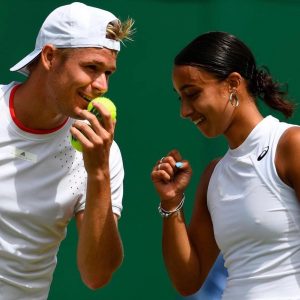

Evan, said that dramatic first-set point gave him “Goosebumps”. “It was a bit of a scrappy point, we were both running around the court switching sides, and when that dropped in to go 4-1 up in the first it was an unbelievable feeling.”
The final set was tightly fought but their single break proved the difference as they won in just over two hours, 5-7, 7-5, 6-4.
#TeamSoto was watching and supporting from round the world!


“We have tried in each match to have fun out there and I have reminded Eden every match to just enjoy it and not have any expectations because it is our first Wimbledon here. At times if you do get too serious you lose that energy and buzz and the bond you have out on the court. So we have tried to have that bit of fun.” Evan Hoyt
Quarter-Final
Evan and Eden came up against the 8th seeds Ivan Dodig of Croatia and Chinese Taipei’s Latisha Chan in their quarter final match. They had a flying start opening up a 4-1 lead by breaking Chan’s serve, but Silva was broken twice as Dodig and Chan fought back to win the opening set.
Evan served for the second set at 5-3, but unfortunately the pair could not force a set point and four games in a row left Chan serving for victory.
A great returning game from the British pair gave them another life as they forced a tie-break and they looked to be taking it to a decider as they led 4-1 and 5-3.
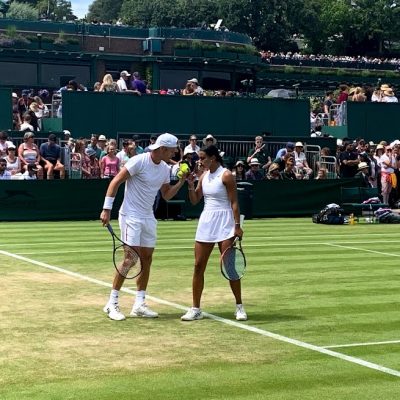

But Dodig and Chan rallied and saw it out in straight sets winning four successive points to win 7-5 7-6.
What a couple of weeks Evan and Eden had at Wimbledon and their positive, fun, energetic and passionate attitudes were exemplary. We couldn’t be prouder of Evan!
“It’s amazing, it is still sinking in, I have thoroughly enjoyed an amazing first experience of senior Wimbledon. If somebody had told me I would be in the quarter-finals of the mixed doubles I would have jumped at the opportunity” Evan Hoyt
In this blog I will aim to fill in some of the blanks in terms of how the new changes are currently affecting players (and coaches). I’ll share opinions from some of the first ITF Transition Tour events of the year in Monastir, Tunisia where I spent the last 2 weeks, as well as the many different articles, comments and blogs posted on social media. Lastly, I want to address the mentality needed to find solutions to this moving forward.
For those who aren’t yet familiar, here are the basic changes from 2018 to this year:
The frustration is completely understandable and the reality of most ‘suspect’ situations is normally money related. Tweets like this from the Vice-President of the German Tennis Federation, Dirk Hordorff only add fuel to that fire: 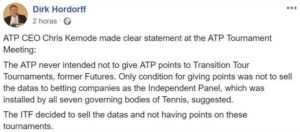

4. Girls 25K and above you start to collect WTA points as per last year’s system. There are no ITF transition tour points on offer.
5. Boys 25K and 25K + H you earn Transition Tour points in these events, but ATP points if you make the final or win in 25K and make semis of 25K + H or better. The points earned from 25Ks last year for the same results count towards your ATP Ranking.
6. How do you get into events?


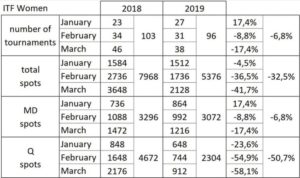

The Challenge Ahead
This leads me to the main issues we are finding which are in tune with the current toxic feeling many have on tour:
The bottom line is the ITF have so far failed to deliver on their promises (see pic below taken from the ITF website) and I am in agreement that players and coaches have the right to fight for this. Write letters, sign petitions and make the ITF aware of the situation and let’s see if they can be moved into re-thinking the structure of the events. 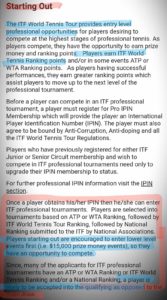

Facing Up to Adversity
At this point I am going to change the mood and the direction in how I am looking at this. As a Director of an Academy with many coaches, players and parents looking for me to lead the way, I have learned to say the word ‘good’ in difficult situations. I am a big believer that there is always opportunity in adversity if we are open minded enough to find it. So my message is clear to all coaches, players and parents: let’s start looking for solutions and opportunities that can come from these changes. 10% of life is what happens to us and 90% is how we respond. Is the situation perfect? Of course not, but the players who respond best to these changes and channel their energies in the right direction are the ones who will reap the benefits. I’ll be fighting tooth and nail to ensure all of our players are thinking in a positive manner on this. I understand this can sound fluffy without some action plans, so here are a few solutions I see in the short term. Additionally, with a positive mind-set, I have no doubt many more opportunities will uncover themselves and those players who ‘want’ it badly enough and are good enough will still shine through.
These are all things in your control. The definition of mental strength for me is the ability to take responsibility of your own actions in any situation, with acceptance for those things out of your control. Stay proactive.
Challenging the Norm
The other thing I already see happening is Tournament Directors taking some control:
My proposed solution to the ITF is relatively simple: Expand the Qualifying draws in Transition Tour events to 48/64 and in ATP Challenger events to 16. And/or Create a clearer pathway for players to gain opportunities to play in the Transition Tour events. One thought is that this is linked to your UTR (Universal Tennis Rating) and there are a high number of localised events to help players compete and in turn gain an accurate UTR to ‘earn’ the right to compete at Transition Tour Level. The players who deserve to compete at ‘pro level’ will soon find their level and those that don’t have the level, well this is how it should be, as previously anybody could say they were a ‘pro tennis player’ just by virtue of ‘places being available’. This will provide more opportunities for players to compete and will also provide more ‘incentive’ to tournament directors to continue running the events that are needed for players to get started in the game. Ultimately, the ITF have to find a way to create a pathway into the Transition Tour events whilst keeping the perception of achievement for getting into the events. If they can do this successfully, I see this as a positive from the ‘old’ system. There is going to be a certain amount of let’s wait and see how it develops. No one likes change and admittedly the changes haven’t filled everyone with confidence in the first few weeks of the year. However, we can find opportunities to compete and develop and no one can take away your positive mind-set if you take that responsibility to do so.
How do you want to respond?
I pose the question to you all – where is your opportunity in this adversity? In Tunisia I witnessed this first hand and the attitude Corentin Denolly has shown is the positive example I would like to leave you all with:
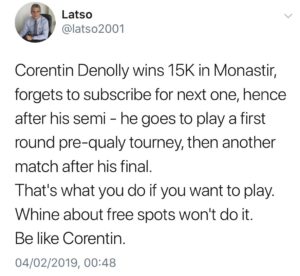

I know I see big opportunity for SotoTennis Academy despite being told how much these rules will affect small tennis academies. We are perfectly set up and have a track record in producing and providing the right environment for players to make top 100 Junior in the world, which is the clear message that the ITF are sending in terms of benchmark. For those who fall short of that for one reason or another, we are also perfectly set up to ensure players have a strong combination of tennis and academics in the ACES (Academic Centres for Excellence in Sport) Programme to keep the options open of US College or UK University scholarships aged 18. Lastly, for those who do want to play on the Pro Tour before or after College we have our team set up for this, so for us, it’s business as usual.
Control the Controllables
Dan Kiernan, SotoTennis Academy Director
Click here for more information about our Full Time and Access Programmes.
For a long time young tennis players have had to decide whether they want to turn pro and pursue their tennis careers, or stay in education.
Here are SotoTennis Academy, we believe you don´t have to make that choice. With tennis careers lasting longer, there isn´t the need to rush to into the professional circuit at 18 like there was even a decade ago.
Instead the US College route gives players 4 years to hone their skills, grow physically stronger, play lots of matches and earn a degree at the same time.
In the latest of our US College guest blog series we hear from former STA player Catherine Vezey from Zimbabwe. Catherine secured a tennis scholarship at King University in Tennessee and takes a look at how SotoTennis Academy helped prepare her for college tennis..
Leaving home at 16 to pursue my passion for tennis was a pretty frightening but exhilarating experience. I left my home in Zimbabwe, my family, and the comfort of all that was familiar to me. I was lucky however; that the place I had chosen to do so was SotoTennis Academy.
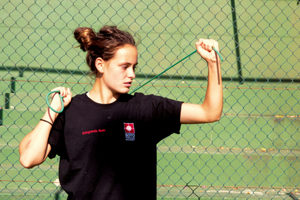

My journey at STA was one full of productivity, learning both on and off the court, happy times and times of struggle. Most importantly it was a journey that allowed me to grow in ways I never could have, had I not been at the academy, or met the people that I did.
My goal for when I left STA was to earn a tennis scholarship, which I did at King University in Tennessee. Playing on a college tennis team is unlike any experience you will have with regard to this sport. It requires sportsmanship, teamwork, social and emotional skills, discipline, and the ability to work within a team. You also need to have the ability to separate yourself and focus on your game.
Keeping in mind that practice takes up your entire afternoon, conditioning your extra hours of sleep in the early morning, and competitions your weekends, you still have to find a way to show up to class, get your assignments done (on time), and stay on top of your grades.
Oh, and let’s not forget the necessity of making sure you eat properly and socialize from time to time.
With all that college tennis entails, STA prepared me as far as is possible for the experience of being a student-athlete. Unlike many of my teammates, I had been mentored by a group of professional coaches who prepared me for the losses, the wins, the gruelling hours of practice, the nutritional and emotional intuition necessary for the intensity of long and hard days, and most importantly the necessity of making your team and mentors your family.
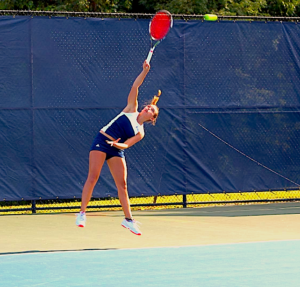

This taught me how important a support team is, not only with regards to tennis, with regard to life in general. Being away from home and family is hard but, luckily for me, I had done it already and knew that I would be okay. STA had taught me that team is synonymous with family and that someone will always have your back.
On a strictly professional spectrum, although I am not one to praise myself in anyway, it was noted by many that my court manner, hard-work ethic, respect, sportsmanship, and empathy towards my teammates were above the others in my team.
I can proudly say that STA is, in many ways, responsible for that. At SotoTennis Academy you learn not only how to be a humble and honorable athlete, but a humble and honorable person who is aware that 10% of life is what happens to you while 90% of it is what you do about it.
My experience at US College was filled with turmoil, disappointment, victory and many losses. It is very easy to get tired of your sport, annoyed with your team and coach, and feel as though it´s just not worth it anymore.
Without having the experience I did at STA and without the support of my Coach – Dan who, regardless of that the fact that he was across the Atlantic ocean on a different continent, continued to cheer me on and give me realistic advice, I would have come a lot closer to giving up than I did.
I stuck it out and I have grown tremendously on my journey through University, as I did at STA. I have made friends that feel like family, and have been fortunate to have coaches that I know I will always be able to turn to.
I am very grateful for all that my experience at STA prepared me for, and gave to me. It expanded my abilities as a tennis player, fed my desire to be the best version of myself, led me to people who will forever be a big part of my life and to whom I owe a great deal of my success, and it prepared me for life.
On the surface, you go to STA to play tennis and get coached by some of the best, but trust me… it is so much more than just a tennis academy.
Catherine Vezey
Former SotoTennis Academy Student-athlete
Our Elite Sports Programme with Sotogrande International School provides student-athletes with the best possible opportunity to secure tennis scholarships to US Colleges.
Want to know how our students fit in their schooling and training? Watch our student-athletes daily routine in our Day in the Life of Video.
Listen to our Podcast episode with Sarah Borwell who runs Tennis Smart. Sarah has helped 100´s of tennis players secure tennis scholarships at US colleges including many from SotoTennis Academy.
Read other blogs from former STA players in our US College guest blog series:-
If you’ve read some of our previous blogs or social media posts you’ll know that we are big believers in the US College system for young tennis players.
But is this option a good fit for you/your child? In the latest in our US College guest blog series we hear from former SotoTennis Academy player Pablo Aycart from Spain. Pablo has just finished his Freshman year at the University of Miami in Florida, after training at STA for 3 years.
Find out how he’s found life and tennis in the US College system and his advice for those who are looking into tennis scholarships.…
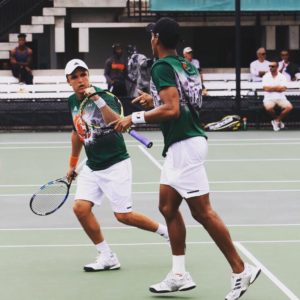

After 3 years training at SotoTennis Academy and studying at Sotogrande International School, I chose to leave Spain where I had spent my whole life to come to the US to continue my tennis career combined with a college degree.
Going to US college was always an option for me, but I also wanted to be a professional tennis player, so in the beginning I was not sure whether to come or not, but as time progressed I realised that moving to the US was the plan for me. When I came to visit the University of Miami I did not want to go back and I have loved every second of it since I arrived. Having just finished my Freshman year, I consider this year the best of my life so far.
Miami was a place that I have always loved so when I was offered a place there to study and play tennis at the highest level, I could not resist. It is hard to imagine the level of College tennis for someone who has not seen it, but I can say from my experience that it is extremely high and competitive. Everyone represents and fights for their universities and every match you play is a battle. The University of Miami competes in the ACC conference, which in my opinion is one of the toughest conferences, if not the toughest. We play against the best universities in the country and face many top players who are highly ranked in the ATP.


College life is amazing, and as a Student-Athlete I would say it is even better. You meet new people, travel around the country with your team, go to support other sports from the university…. All of that and more, combined with academics while playing your sport. My only advice would be to enjoy it as much as possible because time flies and this is for sure the best phase of my life so far.
Playing College tennis has helped me to develop many different skills: You play as a team and you have to face a lot of pressure. Team goals are big: you have to beat the best teams in the country and that requires performing at your best and giving unconditional effort every time you step on the court.
SotoTennis values of ‘pressure is a privilege’ and ‘controlling the controllables’ are very useful here. SotoTennis has always been there for me from a very young age and we have created a family environment, which I can always rely on. They follow me everywhere I go and I come back to them every chance I get.
To conclude, US college is an unbelievable experience. For those who are planning on going, enjoy it! And for the ones that are not sure, I totally recommend it. The feelings and experiences cannot be described until you go through it.
My first year has been incredible and I look forward to the next three. GO CANES!
Pablo Aycart
Former ACES Student at SotoTennis Academy
The ACES Programme with SotoTennis Academy and Sotogrande International School allows players to combine both tennis and academics to a high level and secure US College scholarships.
Want to find out more about our ACES Programme? Check out our Virtual Open Day Video Playlist which gives you access to all parts of the ACES programme and how it could work for you or your child.
Or for more information or to book a trial, email us at info@sototennis.com
Read the other blogs in our US College guest blog series: